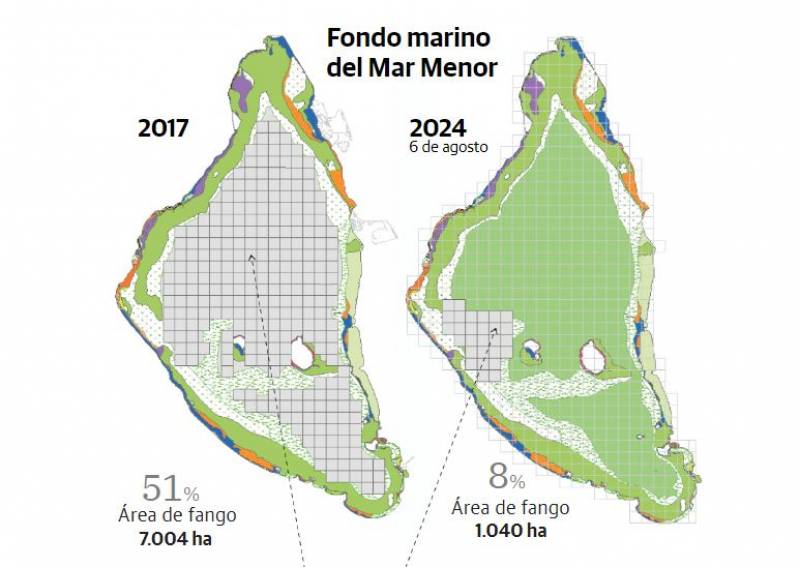Date Published: 14/08/2024
Mar Menor shows signs of ecological recovery
ARCHIVED ARTICLE -
The Mar Menor has recovered more than 85% of its lost plant life, but challenges still remain
The Mar Menor saltwater lagoon in Murcia has faced
severe ecological challenges in recent years, most notably the eutrophication event of 2016, known as ‘green soup’. However, the latest studies suggest that the lagoon is showing significant signs of recovery.
Recovery of seagrass meadows
The regional government of Murcia has announced that the Mar Menor has regained 85% of its seagrass meadows lost due to the 2016 eutrophication crisis. In 2017, a report from the Spanish Oceanographic Institute (IEO) indicated that 7,004 hectares of the lagoon’s seabed were covered in fango, a type of slimy mud that forms as a result of the dramatic loss of vegetation.
However, recent studies by the Murcian Institute for Agricultural and Environmental Research and Development (Imida) reveal that this muddy area has reduced to 1,040 hectares. This suggests that approximately 5,964 hectares of marine prairie have been restored.
The vegetation primarily consists of Caulerpa prolifera, an invasive species from the Mediterranean, mixed in some areas with Cymodocea nodosa (known as seba), which is more typical of the Mar Menor. This restoration means that 92% of the lagoon’s 13,500-hectare seabed is now covered with vegetation, a significant improvement from the 49% coverage reported in 2017.
The ongoing research by Imida includes advanced cartographic studies and the creation of a ‘digital twin’ of the Mar Menor. This digital model aims to provide real-time data on the lagoon’s ecosystem, helping scientists anticipate and respond to ecological changes. The project, funded with a budget of 200,000 euros, has involved 20 research trips using a specially equipped vessel to capture underwater images and videos, and to map the seabed using various probes.
Encouragingly, the research has also led to the discovery of
two new colonies of Pinna nobilis (nacre), an endangered species, in the Los Alcázares area and the northern part of La Manga del Mar Menor. The current salinity level of 45 grams per litre is seen as conducive to the survival of these nacre colonies.
Ongoing challenges and areas of concern
Despite this progress, there are still areas where the Mar Menor remains vulnerable. The region near the mouth of the rambla del Albujón waterway, identified as a major source of nitrates entering the lagoon, continues to be predominantly muddy with little to no vegetation.
This area is also marked by a large white stain visible in satellite images, which reflects ongoing issues with turbidity and a lack of sunlight penetration, both of which are critical for the growth of vegetation on the lagoon’s bottom.
In light of these challenges, the Community Environment Minister, Juan María Vázquez, has called on the Ministry for Ecological Transition and the Demographic Challenge to take immediate action to lower the water table in the Campo de Cartagena aquifer.
This is seen as essential to reducing the flow of nutrients into the lagoon. While the regional government has the option to carry out this task, it has opted not to, citing it as a state responsibility.
Despite positive developments, some environmental indicators are still raising concerns. For instance, turbidity levels have increased in recent weeks, possibly due to rough seas, and the water temperature is now over one degree higher than it was in August 2023, averaging 30.39ºC.
Elevated water temperatures have previously been linked to the deterioration of the lagoon’s ecosystem. Nevertheless, oxygen levels have improved compared to the previous year, a sign of better overall water quality.
While the Mar Menor has made significant strides towards ecological recovery, ongoing monitoring and intervention remain crucial to address the lingering problems it still faces and to ensure the long-term health of this delicate ecosystem.
Images: CARM
article_detail

|































